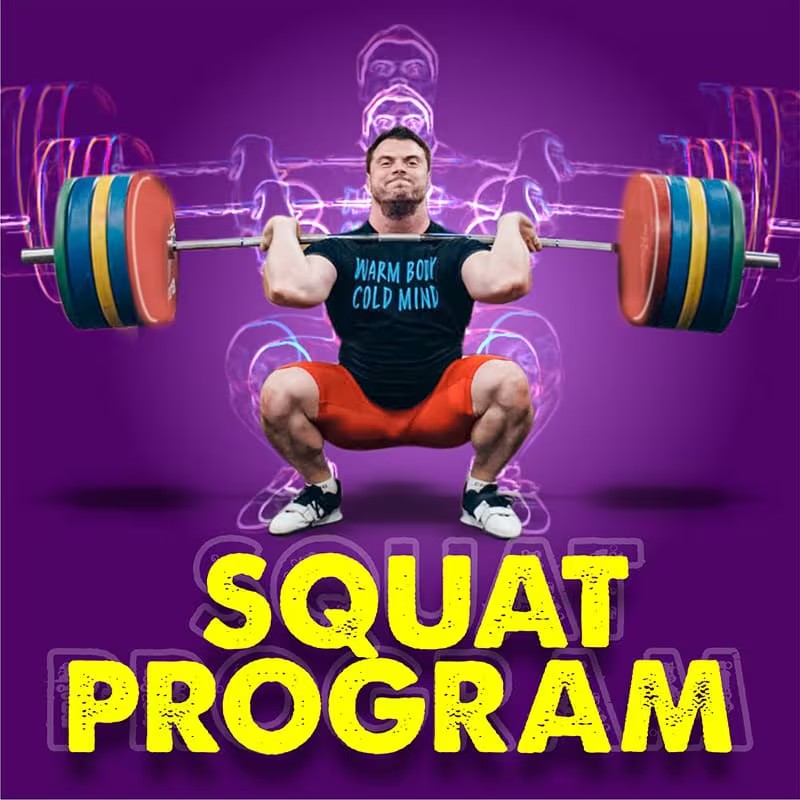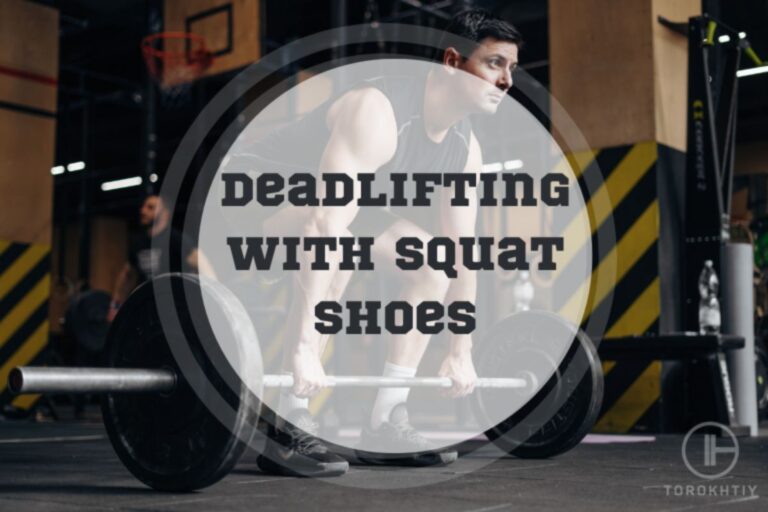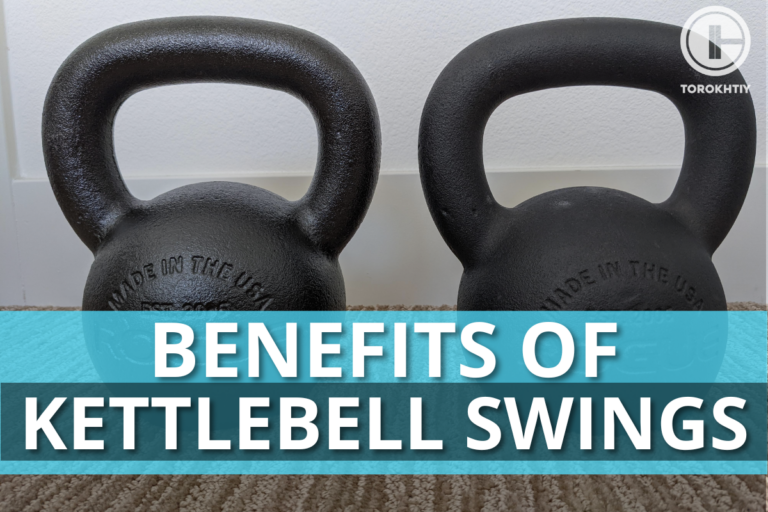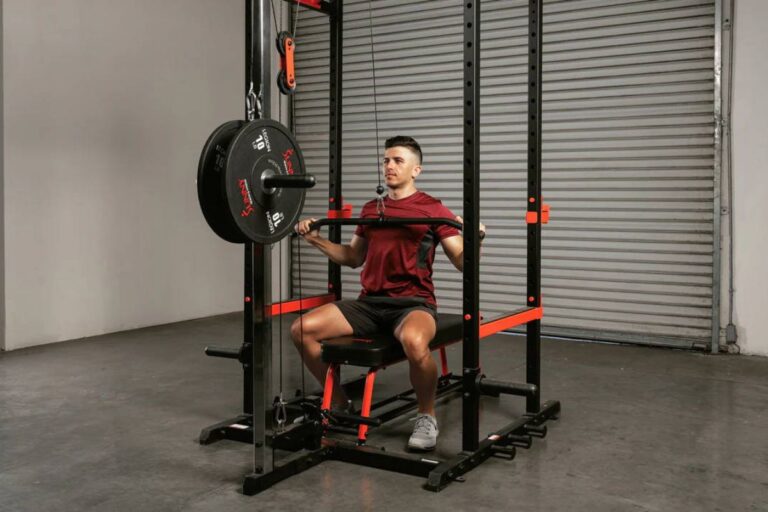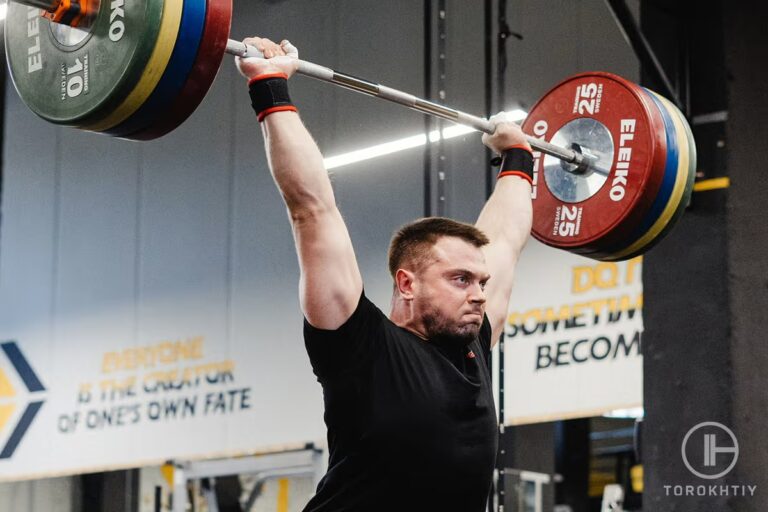Ideal Squat Bar Path Explained By Lifting Coach
If you’re a fellow lifter who enjoys squats, or perhaps you are a novice squatter (one doing squats; not a hobo 😛) just entering the lifting game, chances are – you’ve never heard of the squat bar path. And fear not – you’re definitely not alone!
Chances are, you know about the perfect squat technique, and also about your lifting form being important. Well, if you’re doing squats with a barbell, then the squat bar path is part of the ‘perfect squat technique/form’.
In this article, we will deep-dive into the squat bar path. We’ll answer the what, the why and the how – everything any lifter should know about how the barbell should move during a squat.
Let’s follow the path of the squat and let us find the answers!
What is the squat bar path? This term is used to define the trajectory the barbell follows during a squatting motion. During a squat, the barbell should follow an almost completely vertical straight line during the entire motion.
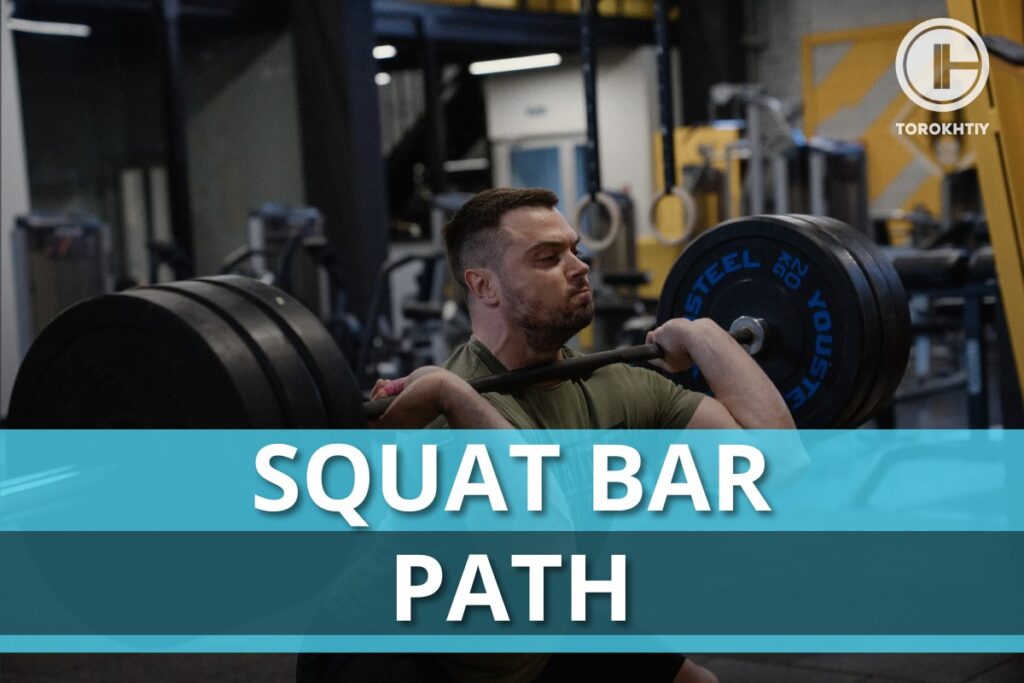
What Is a Squat Bar Path?
When you squat, you need to keep proper form – but that doesn’t just mean your body. Think of the squat path as the journey your barbell takes when you do squats.

The squat is a super effective workout that engages many muscle groups at the same time, including major leg muscles. But you can’t get the most out of it if your form is off. As you lower yourself into the squat, it’s important to guide the barbell in a straight line over the middle of your feet or just a tiny bit behind them.
This downward movement is known as the eccentric phase, and it needs balance to keep the bar from swinging too far forward or backward. When you get to the bottom of the squat, the bar should be right over the middle of your feet, and your hips should be at or below the level of your knees (depending on how deep you go).
When it’s time to stand back up, it’s the concentric phase, and the barbell needs to be moving in a similar path to when you were going down – still over the middle of your feet. Push through the heels, engage your core, and activate your hips as you go up. Make sure not to lean too forward during this.
It’s a common mistake, especially among beginners, but it can really mess with your form and put extra stress on your lower back, so it’s something to watch out for.
Your feet play a role in this, too. They should be shoulder-width apart (or a little bit wider), with your toes pointed slightly out.
Proper Squat Bar Path Explained
Wouldn’t it be great to have a shortcut to this? Or if there could just be that one thing that sort of clicks, and you’re all set, and your squat is perfect? Sadly, there’s no single key to mastering squats, but one thing you need to get down is the squat bar path. It’s pretty easy, in theory, but you’ll need some practice to really get the hang of it.
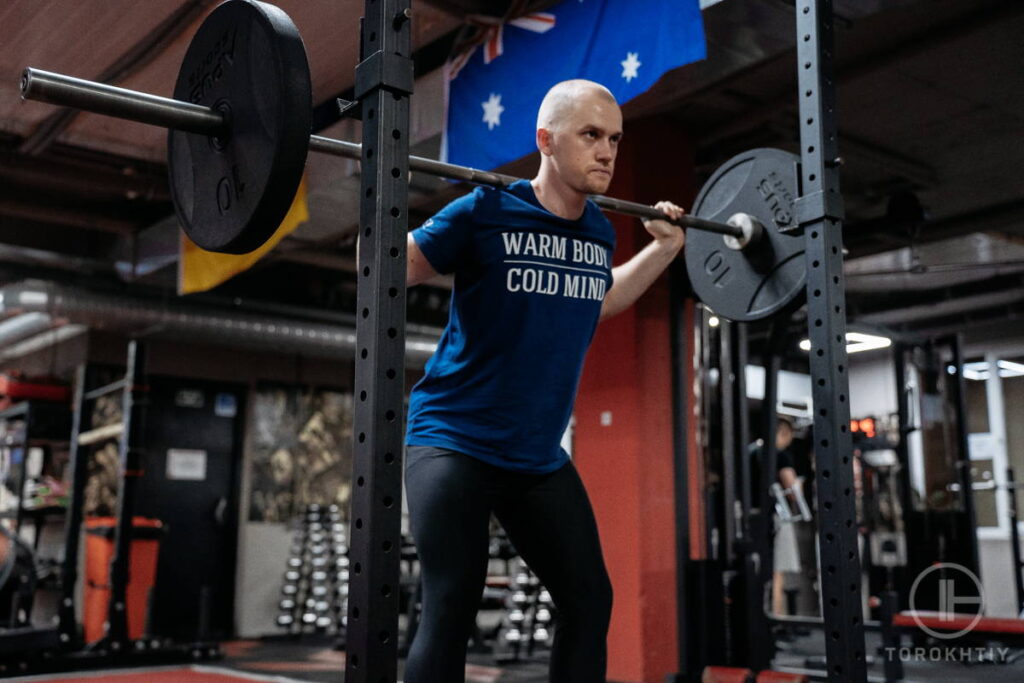
Why Is Proper Squat Bar Path Important?
If you’re a beginner, you might mistake this for a trivial detail, but even beginners know that it’s all about the form. Proper form prevents injuries and makes the workout as effective as possible, and correct squat bar path is a big part of proper form.
1. Optimal Muscle Engagement
This means that, if you follow the correct squat bar path, you’ll get an exercise that’s maximally efficient because all of the muscles that need to be engaged are working as they should. The bar moves in a way that engages your leg muscles (quadriceps, hamstrings), as well as your glutes and core, and this is important for building strength and getting the most out of your workout.
2. Joint Safety
The correct bar path helps you keep your joints properly aligned. Too much strain can lead to injuries, but a straight bar will reduce any unnecessary stress on your knees, hips, and lower back.
3. Balanced Distribution of Weight
If the weight distribution is off, you’re in a world of trouble. If the bar doesn’t follow the proper path, the weight is not evenly distributed over your feet, and you’re not stable enough, which means you can tip forward or backward. Balance is key during both phases of the squat.
4. No Leaning Forward
Leaning too forward is a common mistake and a lot of people do it, but that can put a lot of strain on your lower back. The proper bar path prevents leaning forward and keeps you upright.
6 Main Mistakes that can cause bad Barbell Path
Everybody makes mistakes, and if you think of them as a way to learn, you’ll do great. But it’s good to be aware of the most common mistakes so you can prevent them from happening.
1. Leaning Forward
If you squat, you’ve leaned forward at least a couple of times. This is probably the most common mistake people make, but there’s an easy way to fix it – keep your chest up and maintain an upright posture. Engage your core and make sure the bar moves in a straight line across your feet.
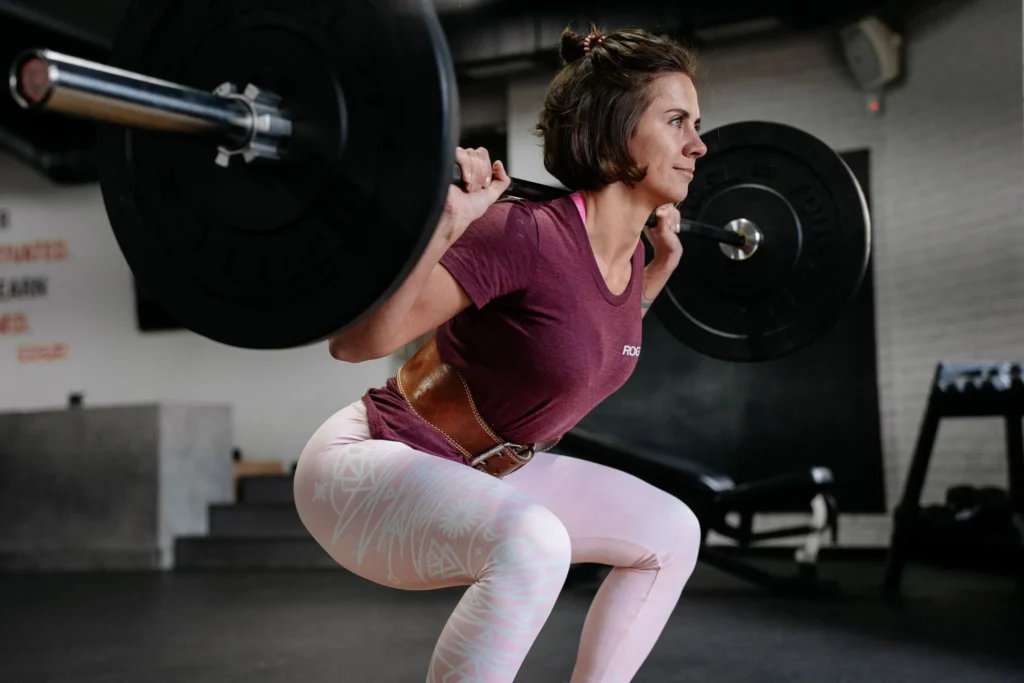
2. Knee Collapse
When your knees cave inward, it strains the knee joint and messes with stability. To prevent it from happening, push your knees out as you lower into the squat. But there are also things you can do outside the actual workout – you can do other exercises, like clamshells, that will make your hip muscles stronger, and that is another thing that can help with this issue.
3. Incomplete Range of Motion
You need a full range of motion for the squat to be effective and to prevent muscle imbalances, which lead to injuries. Make sure your hips go below the knees to hit the proper depth and fully engage your muscles.
4. Bar Drift
When the bar drifts too far forward or backward, it messes with your balance and muscle engagement. Focus on guiding the bar in a straight line over the middle of your feet during the entire movement and pay attention to your body’s balance.
5. Incorrect Foot Placement
This is another thing that can cause you to lose balance and it can compromise the alignment of the barbell path. Your feet should be shoulder-width apart or slightly wider, with toes pointed out a little. This gives your squat a stable foundation.
6. Lowering Too Fast
If you lower yourself into a squat too fast, you risk losing control and potentially hurting yourself. It’s all about control – go down in a controlled manner and allow your muscles to engage gradually. Focus on keeping your body stable at all times.
🔻12 Week Squat Program by Oleksiy Torokhtiy
Do you want to double your squat strength? In just 12 weeks, you’ll be able to boost your squat results.
This program transforms any ordinary squat into a powerful athletic movement.
What’s included:
- 12 weeks of squat programming;
- Effective combination of sets, reps, and weights;
- Fully designed and coached by Oleksiy Torokhtiy;
- Over 60+ movements, banded work, and weight training;
- Accessory work for core, joint stability and injury prevention;
- Max out on back squat and front squat at the end.
Start now and boost your squat results!
How to Improve Your Squat Bar Path: 4 Tips
There are a lot of things to keep in mind – you shouldn’t lean forward, your feet need to be positioned in a certain way, your core needs to be engaged… There’s a good chance you know all this stuff already, but there are some other things that can help you improve your squat bar path.
1. Gradual Depth Progression
You don’t need to do it all at once – work on increasing your squat depth over time. Start with a depth that feels comfortable, and as your strength and flexibility improve, increase the depth you’re going for.
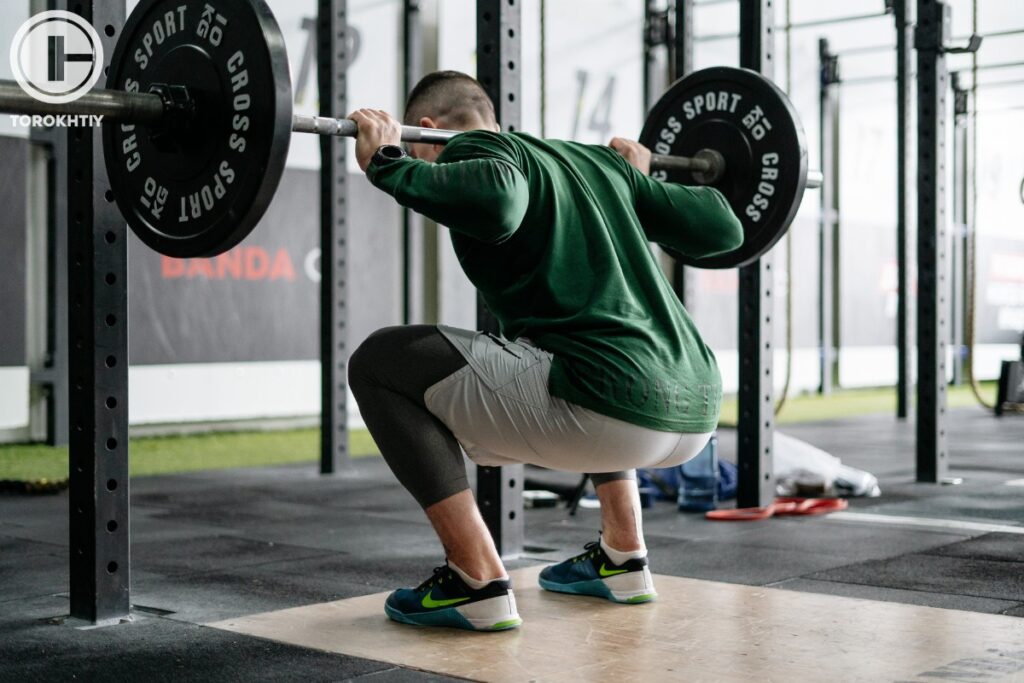
2. Body Position
Before you add any weights, do bodyweight squats to practice your form. As you squat, push your hips back and bend your knees while keeping the chest up. Once you get the form down, you can add weights.
3. Goblet Squats
Include goblet squats in your routine. They’re great because they will help you build strength and refine your bar path. The position you’re in with goblet squats, where the weight is in the front, encourages you to keep your posture upright and reinforces the importance of the bar staying over the middle of your feet.
4. Paused Squats
You might get tempted to rely on momentum, but that would be a mistake, so to prevent it, practice paused squats to focus on control. Pause at the bottom of your squat for 2-3 seconds. This way, you can’t use momentum and you can reassess your form.
FAQ
Is it OK to lean forward when squatting?
The key point when squatting is to keep your spine’s natural alignment, and due to the body’s mechanics, some slight leaning forward can be natural and necessary. With that being said, you shouldn’t force leaning forward as such a position will be imbalanced and prove more dangerous the more weight you have on your barbell.
How important is the bar path?
Besides the obvious tilt (if you’re squatting in front of a mirror), the barbell path is not something you directly see (since it can be best seen from the side), and since you cannot directly feel the barbell’s current and precise position, it is often overlooked by lifters. However, the bar path is critical when it comes to squats, as it affects the whole exercise (e.g., muscle engagement, joint safety, balance).
A correct path makes sure the weight is distributed evenly, energy transfer is efficient, and it helps prevent mistakes.
Conclusion
If, until now, you didn’t know how much a proper bar path affects exercises such as the squat, don’t worry; a lot of lifters haven’t even heard of the term ‘bar path’. When you think of the perfect squat form, one of the things that’ll be mentioned is the barbell path.
It is something that each lifter (especially beginners) should be aware of and actively think about during the squatting movement in order to achieve pristine form.
In order to achieve the proper barbell path during squats, it is best to take off all the weight plates, stand in front of a mirror, and have a friend/colleague/fellow lifter video record you from your side.
This way, you’ll be able to notice any barbell tilting movement, as well as check if the barbell moves in a (almost) straight line when performing the entire squat motion. But, rather than just observing the barbell path yourself, any feedback given to you from a coach or an experienced lifter can prove invaluable.
Now, we’d like to hear from you! Did you know about the squat bar path? If yes, at which point in your training did you learn about it? We’d love to hear all your thoughts on the matter, as well as learn of your experiences. So, if you have any tips, tricks, or additional advice to share on the barbell path, be sure to hit the comments section below!
Let the squat bar path guide you!
References:
- David Bautista, Dustin Durke, Joshua A Cotter, Kurt A Escobar, Evan E Schick, “A Comparison of Muscle Activation Among the Front Squat, Overhead Squat, Back Extension and Plank,” International Journal of Exercise Science 13, no. 1 (2020): 714-722.
- Kate Neudecker “Learn How to Do Front Squats to Fire up Your Quads and Light up Your Core,” Men’s Health, https://www.menshealth.com/uk/how-tos/a735538/front-squat/ (accessed February 19th, 2024)
- Michael Matthews, “Squatting and Your Knees and Back: Injury Risk or Safe?” Legion Athletics, https://legionathletics.com/squatting-and-your-knees-and-back/ (accessed February 19th, 2024)
- Tengku-Fadilah Kamalden, Qais Gasibat, Shamsulariffin Samsudin, Jacklyn Joseph, “Occurrence of Muscle Imbalance and Risk of Injuries in Athletes using Overhead Movements: A Systematic Review,” Sport Mont Journal 19, no. 3 (2021): 3-10.
Why Trust Us?
With over 20 years in Olympic Weightlifting, our team does its best to provide the audience with ultimate support and meet the needs and requirements of advanced athletes and professional lifters, as well as people who strive to open new opportunities and develop their physical capabilities with us.
By trusting the recommendations of our certified experts in coaching, nutrition, dietology, and sports training programming, as well as scientific consultants, and physiotherapists, we provide you with thorough, well-considered, and scientifically proven content. All the information given in the articles concerning workout programming, separate exercises, and athletic performance, in general, is based on verified data. We ensure that you can rely on our professionals’ pieces of advice and recommendations that can be treated as personalized ones which will benefit you and fully meet your needs.
The product testing process is described in more detail here
Author: Sergii Putsov
Head of Sport Science, PhD
Best Results: Snatch – 165 kg,
C&J – 200 kg
Sergii Putsov, Ph.D., is a former professional weightlifter and National team member, achieving multiple medals in the 94 kg weight category at national competitions. With a Master’s degree in “Olympic & Professional Sport Training” and a Sport Science Ph.D. from the International Olympic Academy, Greece, Sergii now leads as the Head of Sport Science. He specializes in designing training programs, writing insightful blog articles, providing live commentary at international weightlifting events, and conducting educational seminars worldwide alongside Olympic weightlifting expert Oleksiy Torokhtiy.

